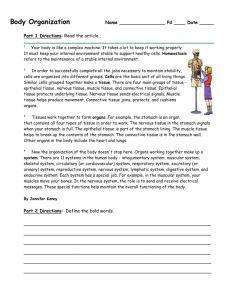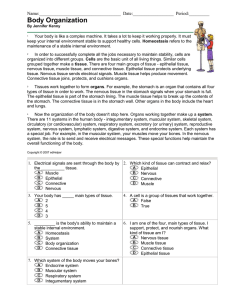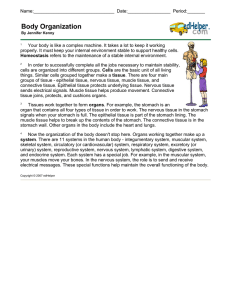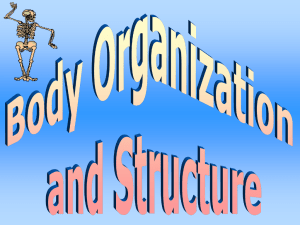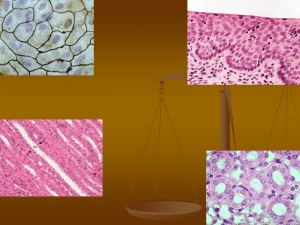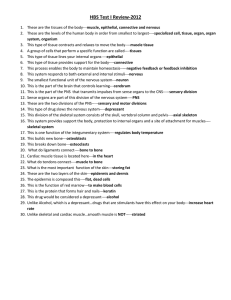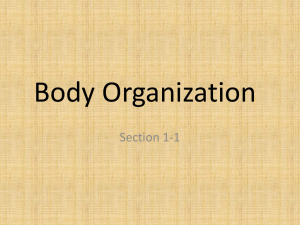Science Homework 10.20.2014 Body Organization
advertisement
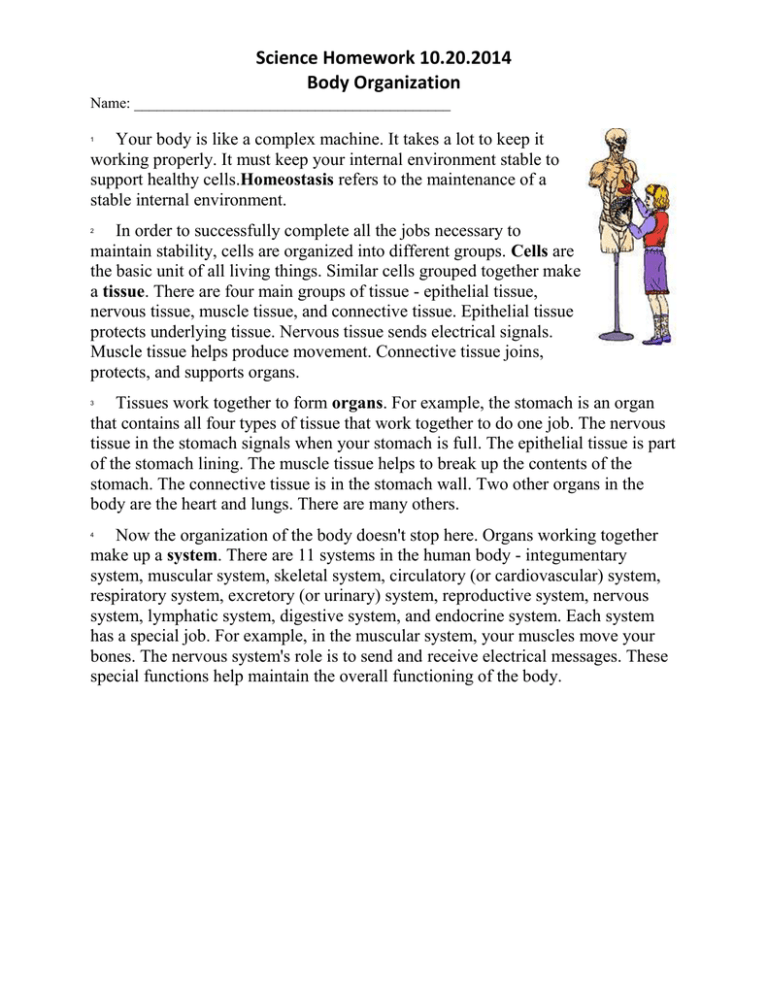
Science Homework 10.20.2014 Body Organization Name: __________________________________________ Your body is like a complex machine. It takes a lot to keep it working properly. It must keep your internal environment stable to support healthy cells.Homeostasis refers to the maintenance of a stable internal environment. 1 In order to successfully complete all the jobs necessary to maintain stability, cells are organized into different groups. Cells are the basic unit of all living things. Similar cells grouped together make a tissue. There are four main groups of tissue - epithelial tissue, nervous tissue, muscle tissue, and connective tissue. Epithelial tissue protects underlying tissue. Nervous tissue sends electrical signals. Muscle tissue helps produce movement. Connective tissue joins, protects, and supports organs. 2 Tissues work together to form organs. For example, the stomach is an organ that contains all four types of tissue that work together to do one job. The nervous tissue in the stomach signals when your stomach is full. The epithelial tissue is part of the stomach lining. The muscle tissue helps to break up the contents of the stomach. The connective tissue is in the stomach wall. Two other organs in the body are the heart and lungs. There are many others. 3 Now the organization of the body doesn't stop here. Organs working together make up a system. There are 11 systems in the human body - integumentary system, muscular system, skeletal system, circulatory (or cardiovascular) system, respiratory system, excretory (or urinary) system, reproductive system, nervous system, lymphatic system, digestive system, and endocrine system. Each system has a special job. For example, in the muscular system, your muscles move your bones. The nervous system's role is to send and receive electrical messages. These special functions help maintain the overall functioning of the body. 4 Science Homework 10.20.2014 Body Organization 1. Electrical signals are sent through the 2. Which kind of tissue can contract body by the __________ tissue. Nervous Epithelial Muscle Connective 3. Your body has _____ main types of tissue. 4 5 3 2 5. _________ is the body's ability to maintain a stable internal environment. Body organization Homeostasis System Connective tissue 7. Which system of the body moves your bones? Respiratory system Muscular system Integumentary system Endocrine system and relax? Connective Muscle Epithelial Nervous 4. A cell is a group of tissues that work together. False True 6. I am one of the four main types of tissue. I join, protect, and support organs. What kind of tissue am I? Epithelial tissue Muscle tissue Nervous tissue Connective tissue Science Homework 10.20.2014 Body Organization Body Organization Describe the structural organization of the human body. Science Homework 10.20.2014 Body Organization Body Organization Name and describe the four types of tissue. Science Homework 10.20.2014 Body Organization Body Organization Pick two systems of the human body and describe their jobs. Science Homework 10.20.2014 Body Organization
